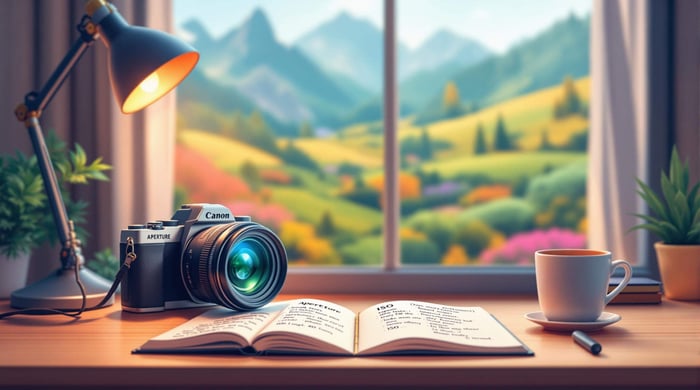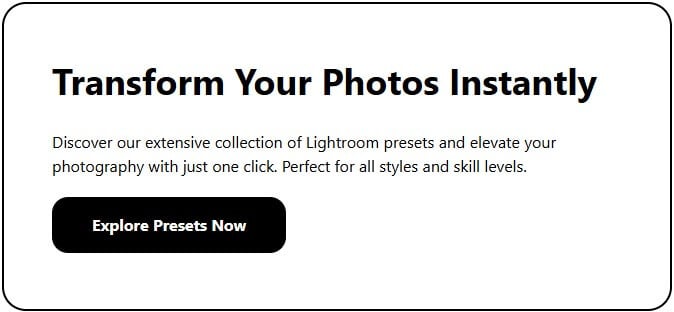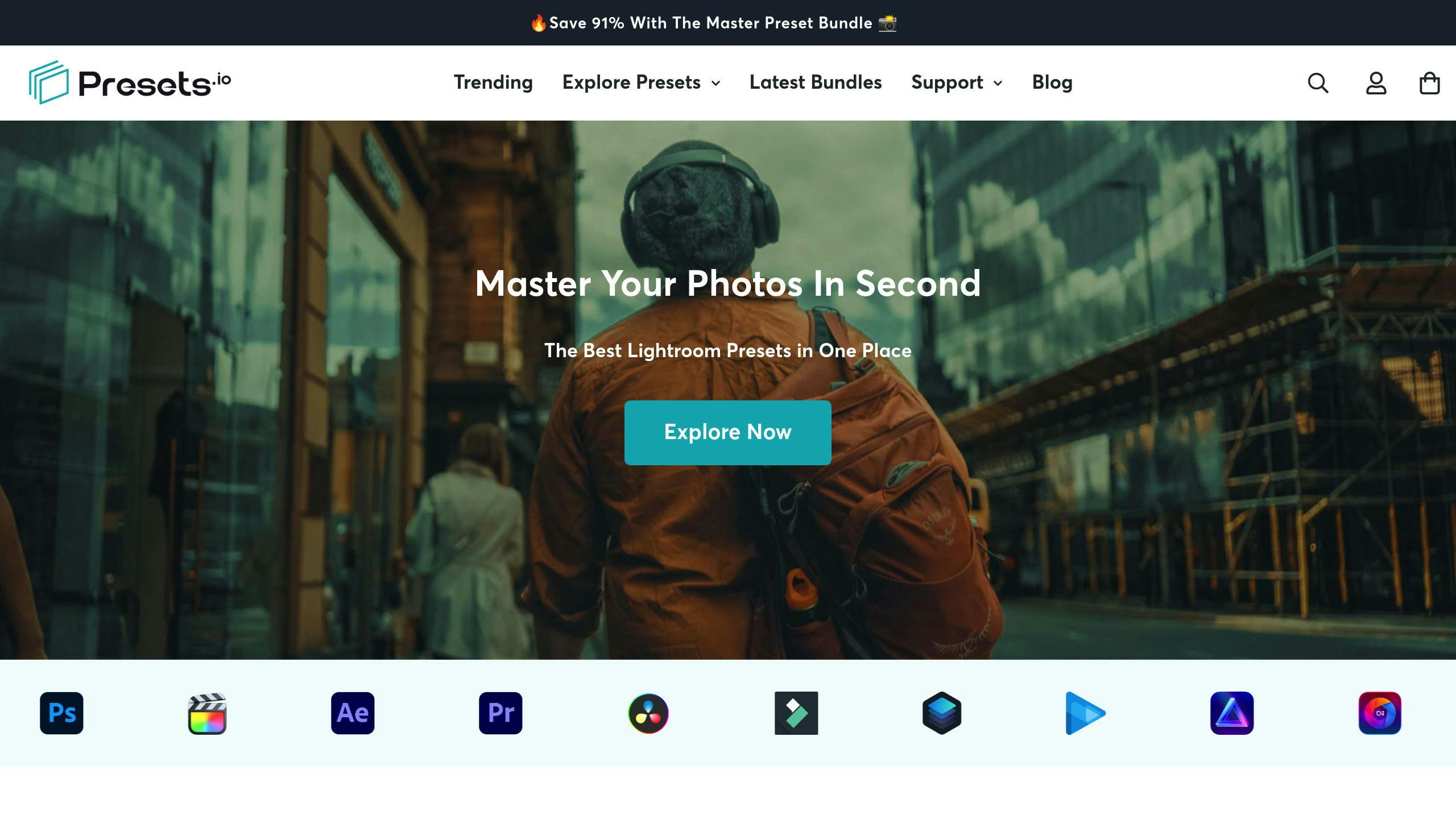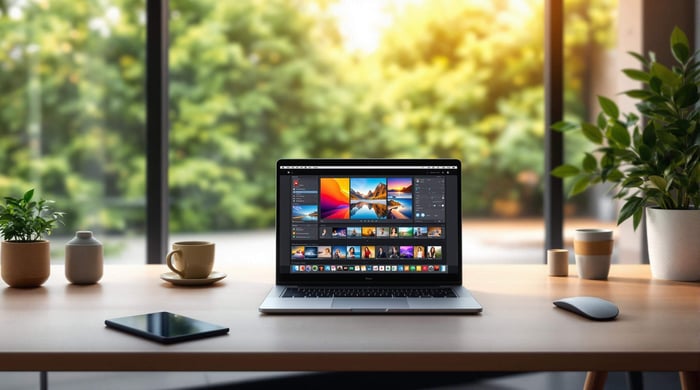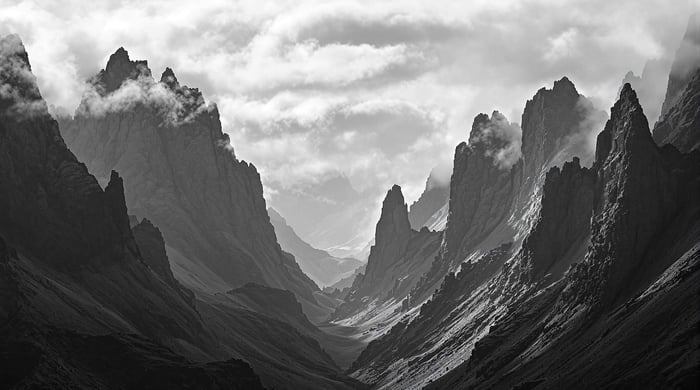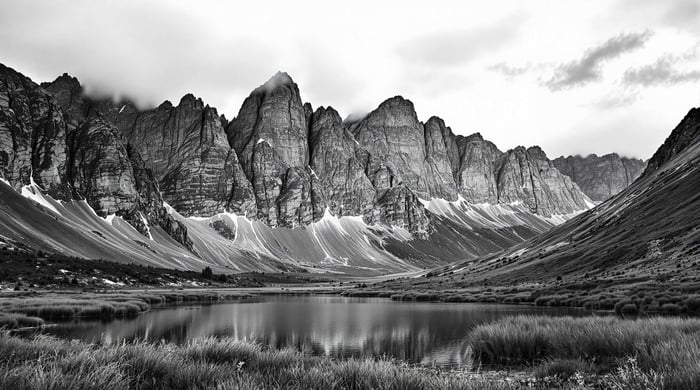A Glossary of Photography Terms: From Aperture to Zoom
Want to improve your photography skills? Start by understanding the essential terms that shape your craft. This guide breaks down everything from aperture and ISO to advanced concepts like bokeh and post-processing. Here's a quick overview of what you'll learn:
- Aperture: Controls light and depth of field (e.g., f/2.8 for portraits, f/16 for landscapes).
- Shutter Speed: Freezes motion or creates blur (e.g., 1/1000 for action shots, 1 second for light trails).
- ISO: Adjusts light sensitivity, balancing brightness and noise.
- Depth of Field: Determines sharpness across your image, influenced by aperture, focal length, and subject distance.
- Bokeh: The aesthetic quality of blurred backgrounds.
- Zoom: Optical (better quality) vs. digital (lower quality).
- RAW vs. JPEG: RAW offers more editing flexibility, while JPEG is ready to use but less adjustable.
Use this glossary as a quick reference to master photography terms and elevate your skills. Whether you're a beginner or a pro, understanding these concepts will help you take better photos and edit like a pro.
ISO, Shutter Speed and Aperture Explained | Exposure Basics for Beginners
Basic Photography Terms
These three key settings work together to shape exposure and achieve specific photographic effects.
What Is Aperture?
Aperture refers to the lens opening that determines how much light enters the camera. It's measured in f-stops. A smaller f-number (like f/2.8) means a larger opening, letting in more light and creating a shallow depth of field - ideal for portraits. A larger f-number (like f/16) results in a smaller opening, allowing less light and giving a deeper focus, which is great for landscapes. Think of it like the pupil of your eye, adjusting to control light.
Understanding Shutter Speed
Shutter speed dictates how long the camera's sensor is exposed to light. Measured in seconds, faster speeds (like 1/1000) freeze motion, making them perfect for capturing sports or wildlife. Slower speeds (like 1 second) allow motion blur, useful for creative shots like light trails or flowing water [3].
What Does ISO Mean?
ISO measures your camera's sensitivity to light. A low ISO (100-400) works best in bright conditions, producing clear, sharp images. Higher ISO settings (1600 and above) are helpful in low-light situations but can introduce noise, which reduces image quality. Finding the right balance between ISO, aperture, and shutter speed is key to getting the best results[2].
"Understanding the interaction between aperture, shutter speed, and ISO is crucial for achieving the desired exposure in various photography scenarios. Each setting affects not only exposure but also other aspects of your image, from depth of field to motion blur and noise levels." [2]
These three elements - aperture, shutter speed, and ISO - not only control exposure but also influence depth of field, motion effects, and image clarity. Getting a handle on them is the first step toward tackling advanced topics like bokeh and depth of field.
Advanced Photography Concepts
How Depth of Field Works
Depth of field (DoF) refers to the part of an image that looks sharp and in focus. It’s influenced by three main factors: aperture, focal length, and subject distance. A wide aperture (like f/2.8) creates a shallow focus area, while a narrow aperture (like f/16) keeps more of the scene sharp.
These elements offer creative control. For example, landscape photographers often use a wide-angle lens and a small aperture (f/11 or higher) to ensure sharpness from the foreground to the background. On the other hand, portrait photographers typically use medium to long focal lengths (50-85mm) with wide apertures to make their subject stand out against a blurred background [1][3].
| Factor | Effect on Depth of Field | Common Applications |
|---|---|---|
| Wide Aperture (f/1.4-2.8) | Creates shallow focus | Portraits, Product Photography |
| Narrow Aperture (f/11-16) | Keeps more in focus | Landscapes, Architecture |
| Long Focal Length | Reduces focus range | Wildlife, Sports |
| Short Focal Length | Expands focus range | Street Photography, Interiors |
A shallow depth of field isn’t just about focus - it also enhances the blurred areas, known as bokeh, adding a visually pleasing effect to your images.
What Is Bokeh?
Bokeh refers to the visual appeal of the blurred parts of a photo, particularly the out-of-focus highlights. The word originates from Japanese and means "blur" or "haze." The look of bokeh depends on the lens’s aperture design and the shape of the diaphragm [2].
High-quality bokeh often features smooth, circular highlights that give images a soft, dreamy feel. Since focal length affects depth of field, it also influences how bokeh appears.
Zoom: Optical vs. Digital
Optical zoom adjusts the lens’s focal length, maintaining image quality no matter how much you zoom in. Digital zoom, on the other hand, crops and enlarges the image, leading to lower resolution and pixelation. For wildlife or sports photography, rely on optical zoom first. Use digital zoom only as a last resort [3].
| Feature | Optical Zoom | Digital Zoom |
|---|---|---|
| Image Quality | Stays intact | Gets worse |
| Mechanism | Adjusts the lens | Crops and enlarges the image |
| Best Use Case | Primary zoom method | Backup option only |
| Resolution | No loss | Decreases with zoom |
Post-Processing and Editing Terms
Post-processing is the stage where photographers fine-tune their images. Knowing tools like Lightroom presets and file formats can make a big difference in the final result.
Lightroom Presets Explained
Lightroom presets let photographers apply the same edits across multiple photos quickly. They’re a great way to keep a consistent style throughout a project.
| Preset Type | Purpose/Examples |
|---|---|
| Aesthetic | Vintage effects, black & white edits |
| Cinematic | Movie-inspired color tones, bold contrasts |
| Utility | Noise reduction, sharpening, lens corrections |
Presets are a great starting point, but most photographers tweak them further to suit each photo's unique lighting and composition.
RAW vs. JPEG: Key Differences
Choosing between RAW and JPEG formats affects how much control you have during editing and the overall quality of your images. RAW files act like digital negatives, capturing all the data from your camera's sensor. This makes them far more adjustable than JPEGs, especially for exposure, white balance, and color corrections.
| Feature | RAW | JPEG |
|---|---|---|
| File Size & Storage | 25-35MB per image | 8-12MB per image |
| Editing Flexibility | High (non-destructive) | Limited |
| Dynamic Range | Full sensor data | Compressed range |
| Processing Speed | Slower | Ready to use |
RAW files are especially useful in tricky lighting, as they retain more detail in shadows and highlights. This allows you to recover details that might seem lost during the initial shot [1].
Lightroom’s non-destructive editing ensures your original files remain untouched, no matter how many adjustments you make. Many professionals also organize their work by keeping separate catalogs for different projects, streamlining their workflow and ensuring consistency across similar sets of images.
Additional Resources
Learning photography terms is just the start. These resources can help you put your knowledge into action.
Using Presets.io
Presets.io features a wide variety of Lightroom and mobile presets designed for different photography styles. From cinematic tones to vintage effects, their curated collections cover a range of editing preferences. Plus, their detailed guides ensure these presets are easy to use, no matter your skill level.
Whether you're looking to streamline your editing process or try out new styles, this platform offers practical tools and creative inspiration.
Other Photography Guides and Glossaries
Check out platforms like Conservation Visuals for storytelling with a focus on nature, Shutterfly for step-by-step tutorials, and UK Photo Tours for interactive workshops. Each of these resources blends technical tips with hands-on learning.
Adobe Creative Cloud's Photography Plan is another great option, providing access to Lightroom, Photoshop, and regularly updated tutorials. Their learning materials help bridge the gap between theory and application, making it easier to bring your ideas to life.
These tools and resources can help you sharpen your skills and take your photography to the next level.
Conclusion
What You Learned
This glossary expands your photography vocabulary, helping you improve both your technical skills and communication. From understanding terms like aperture to concepts like bokeh, this guide equips you to make better decisions during shoots and work seamlessly with others. Use it as a handy reference to connect the technical and artistic sides of photography, supporting your development as a photographer.
Where to Go Next
Try experimenting with your camera settings - adjust aperture to play with depth of field or tweak shutter speed for capturing motion in different lighting. Check out preset collections on Presets.io to enhance your editing skills and see how various adjustments affect your photos.
Learning photography terms is a process - bookmark this glossary to revisit as needed. With practice and regular use, you'll refine your skills and communicate more effectively in the photography world.


